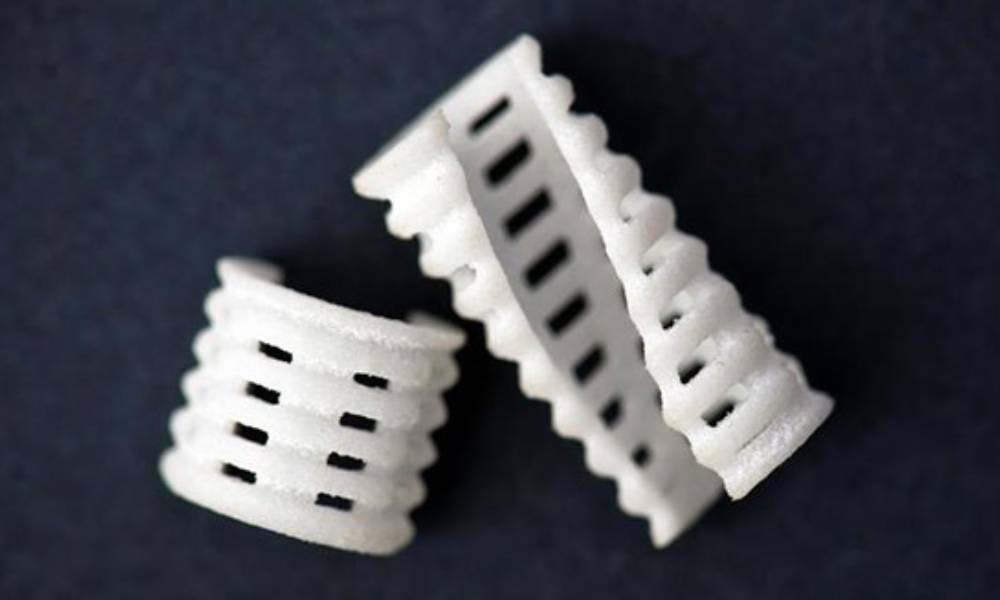Discover life-saving 3D printed devices
Posted By Lucie Gaget on Dec 18, 2019 | 0 comments
You certainly know it by now, but additive manufacturing is more and more used in the medical industry, from tools and models to prosthesis and implants. But today we want to focus a little bit more on life-saving 3D printed devices. How can this technology not only improve surgeons’ daily tasks but also save lives? That is what we are going to discover in this blog post.
3D printing, saving a baby’s life
Let’s go back a few years ago. The six weeks old baby, Kaiba Gionfriddo, endured a real life-threatening event. While being at a restaurant, his parents saw him turn blue as he stopped breathing. The incident was due to a collapsed bronchus blocking the flow of air in his lungs. While almost all doctors had given up any hope to save the boy, two of them from the University of Michigan teamed up to find a solution. They came up with the groundbreaking idea to create a 3D printed device that could help to support Kaiba’s bronchus.
Glenn Green, M.D., associate professor of pediatric otolaryngology at the University of Michigan and his colleague, Scott Hollister, a biomedical engineer, proposed to 3D print a piece of biodegradable skeleton to replace the malfunctioning bronchus during the time needed by the body to repair it. For this project to come to life, they had to obtain an emergency clearance from the Food and Drug Administration to create and implant a tracheal splint for Kaiba made from a biopolymer called polycaprolactone.
Thanks to the use of 3D modeling software, the doctors were able to design a splint fitting exactly Kaiba’s trachea. The 3D printing process then allowed them to produce the design quickly.
On this issue, Dr. Glenn Green stated:
“We obtained imaging of his defect with a CT scan. Scott Hollister rapidly went about designing a splint that would meet this need. This is the first time this procedure has been done anywhere in the world.”
The boy was able to breathe on his own only 21 days after the procedure and did not show any signs of breathing trouble ever since.
Scott Hollister added:
“The material we used is a nice choice for this. It takes about two to three years for the trachea to remodel and grow into a healthy state, and that’s about how long this material will take to dissolve into the body” And Dr. Green concluded: “Severe tracheobronchomalacia has been a condition that has bothered me for years, (…) I’ve seen children die from it. To see this device work, it’s a major accomplishment and offers hope for these children.”
For more information about this amazing story, you can check the video below:
Why can 3D printing save lives?
If the use of additive manufacturing is becoming more and more common, it’s thanks to the new opportunities offered by this technology. And we can already say that 3D printing will help to save even more lives in the future, as it’s continuously helping surgeons and doctors to work faster and better.
Additive manufacturing is also allowing to make custom-made implants, and this way, create implants perfectly adapted to any morphology. For kids, it’s becoming the perfect solution to create smaller devices.
What do you think about the opportunities offered by 3D printing in the medical field? We are curious to read your point of view!
If you want to develop your medical devices, you can contact us, or directly upload your file on our online 3D printing service and get your parts in a few days.
Don’t forget to subscribe to our newsletter and get inspired by all the latest 3D printing news.
Credit picture: https://www.todaysmedicaldevelopments.com/


 Connect with Google
Connect with Google Connect with Facebook
Connect with Facebook